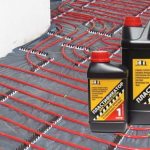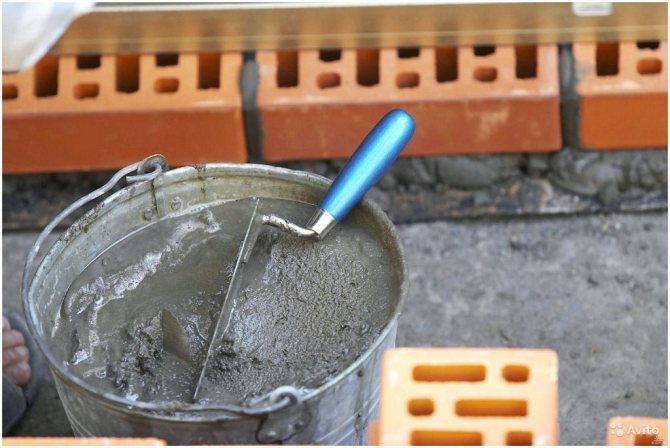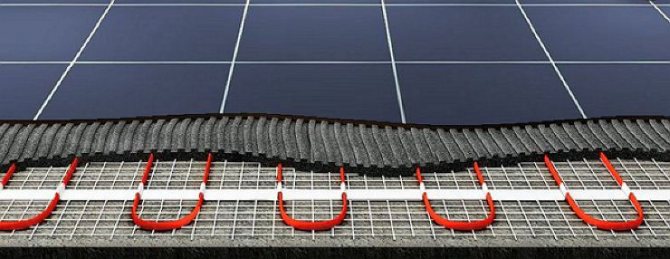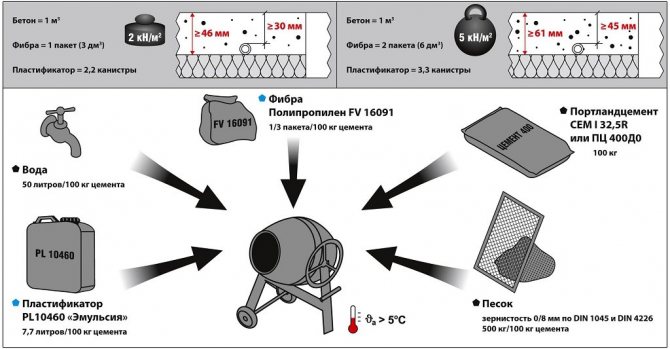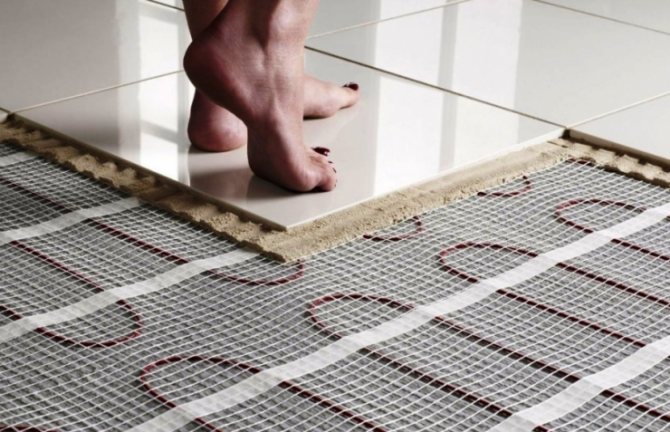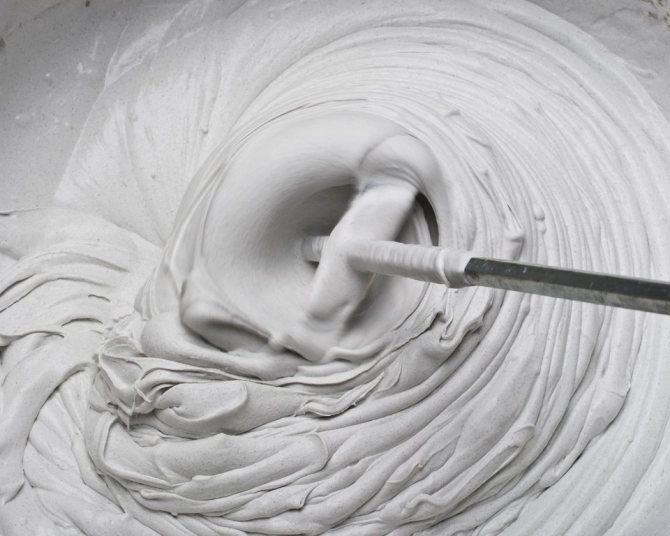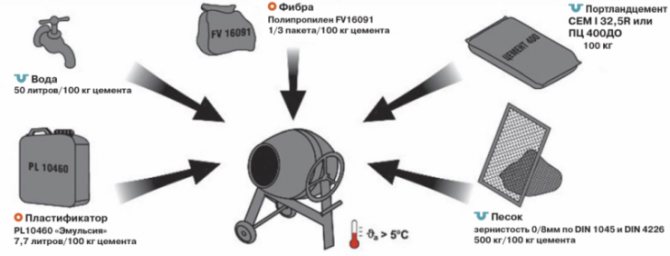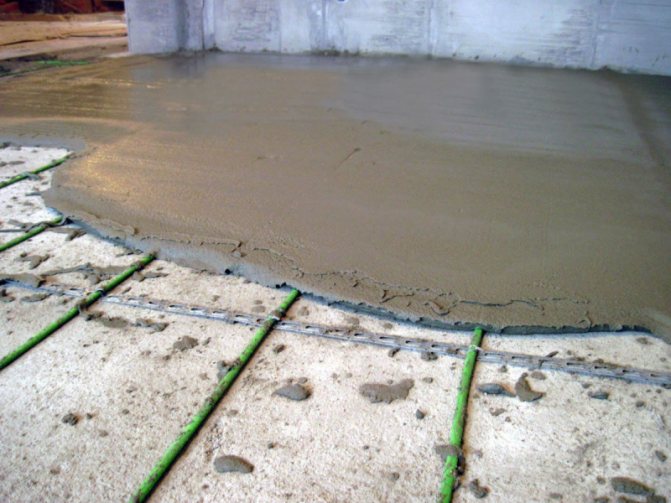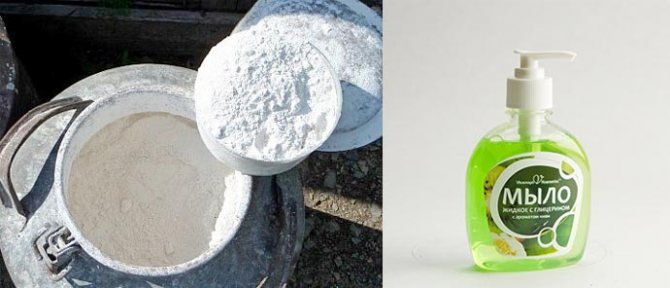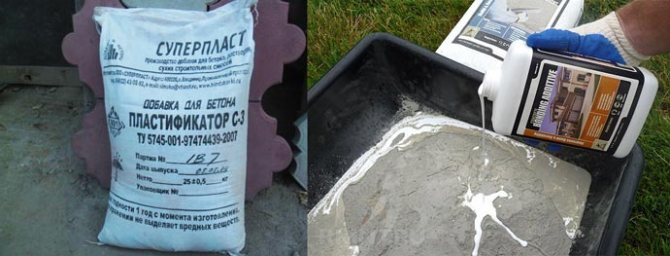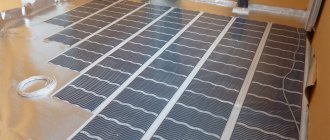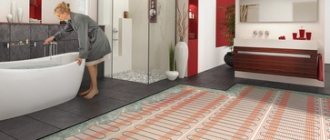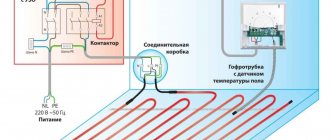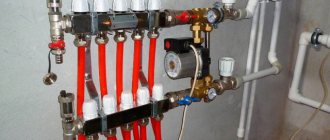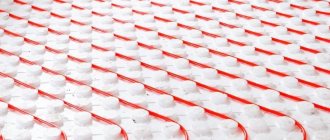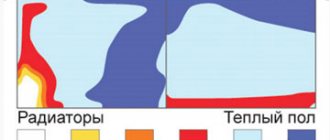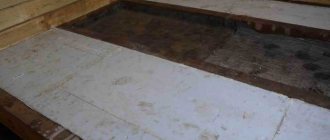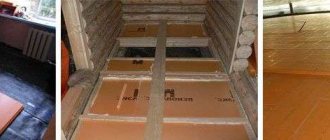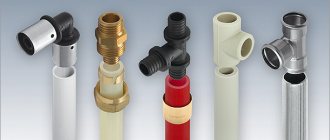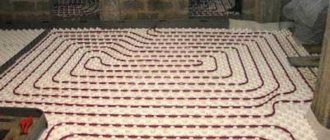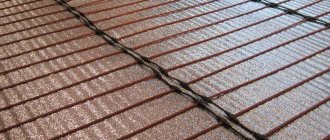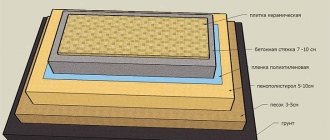Purpose and properties
The plasticizer is included in almost all building mixtures. A high-quality screed of warm floors without such an additive is practically not carried out. This is due to the fact that plasticizers improve the characteristics of cement slurries:
- increase the adhesion speed;
- increase strength;
- give plasticity;
- simplify the styling process;
- provide a flat screed surface;
- reduce the amount of water in the mixture;
- increase the index of frost resistance;
- contribute to good water resistance.
A screed with a plasticizer for a warm floor turns out to be even and does not crack during operation. At the same time, the thermal insulation characteristics of the solution increase, increasing the efficiency of the heating equipment.
The use of plasticizers makes it possible to increase the strength of the cement-sand screed by up to 50 percent. Such additives do not contain harmful substances, which allows them to be used for any type of premises.
Thanks to the plasticizer, the solution dries faster. This property of the mixture when laying underfloor heating makes it possible to speed up the process of putting the heating system into operation.
Recommended modifiers
The list of plasticizing admixtures for underfloor heating is quite large. But the following brands are most in demand in terms of their effectiveness:
- polyplast SP-1, also known as plasticizer S-3, is an analogue of the foreign product "Mayti100", it is considered a superplasticizer used in working with concrete. It is a generic type of impurity. It is used in an amount of not more than 0.7% of the total mass of cement. The additive helps to increase the fluidity of screed mixtures by almost 9 times. The amount of water is reduced, practically by 15%, providing an increase in the strength of the screed up to 30%, the corrosion resistance is increased by more than 3 times;
- plasticizer "Warm floor" brand HLV-75 is used to prepare a rough base of a house under a warm floor with water or electric heating elements. For 100 kg of cement, it is necessary to use from 0.5 to 2 liters of the product. The screed strength index for underfloor heating increases by 25%, the speed of hardening increases by 3 times or more;
- plasticizing additive Batichem - a powdery mass, has a wide range of uses, including for preparing a screed for installing a warm floor. The additive is used in the procedure for pumping concrete using pumps. The effectiveness of this action increases by more than 30%, the absorption rate increases by 20%. The setting time of concrete increases significantly, while the final indicators of concrete strength increase many times;
- manufacturers of the Rehau additive will help to avoid unpleasant consequences in the form of cracks, waves and other defects on the coating surface. This is facilitated by a plasticizer for a warm floor. The peculiarity of the product is that it, introduced into the composition of the sand-cement or cement mass for the underfloor heating screed, restrains the change in its crystal lattice during the heating or cooling of the structure.
We recommend: How to install an electric warm floor under the tiles?
In the process of preparing solutions for underfloor heating by mechanical (using a concrete mixer) or manual (mixing the mixture with a simple product) methods, you should adhere to this order: first, water with a plasticizer is poured into the prepared container.
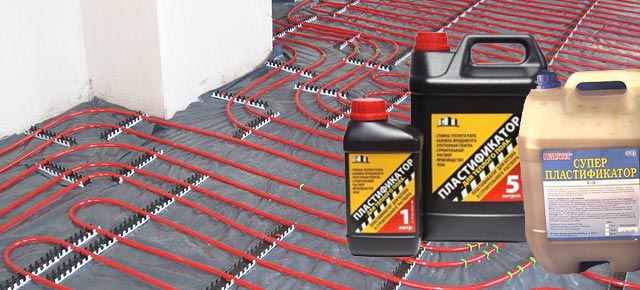
Then the cement and the remaining components are poured. It is recommended to add the plasticizer together with water, thus achieving good mixing.
Manufacturers supply modifiers for underfloor heating to the construction market in special containers, which ensure reliable storage of substances at home for a long time in specially designated places.
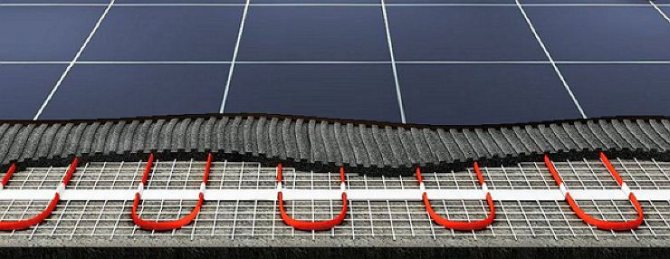

They are securely closed, each container has an instruction, a label with the name of the substance, and the manufacturer's indication.
- Similar posts
- How to make a warm floor from a heated towel rail?
- What kind of warm floor is better to put under the tiles?
- How to install underfloor heating under a laminate on a wooden floor?
- How to choose a rod infrared underfloor heating?
- How is the installation of PЕrt pipes for underfloor heating carried out?
- How to install Energy underfloor heating?
Types of plasticizers
To improve the quality and improve the characteristics of mortars, various types of additives are made. According to the structure and method of use, plasticizers are of two types:
- Dry. Such additives for building mixtures are produced in powder form. They are added directly during mixing of the solution or diluted with water before mixing all components.
- Liquid. Plasticizers of this type are concentrated. They are poured into the cement mixture in small quantities. When using liquid additives, much less water is required to mix the mortar. This speeds up the bonding process of the screed and shortens the drying time.
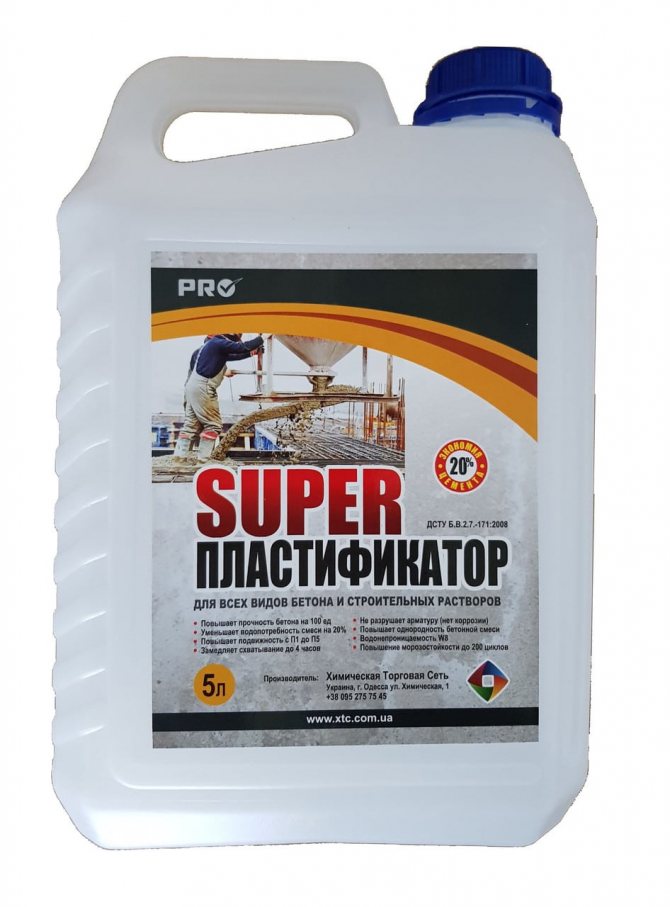

Liquid plasticizer for underfloor heating
Plasticizers can differ in their chemical composition. There are additives for solutions based on:
- polycarboxylates;
- technical lignosulfonates;
- polymer compounds.
Depending on the composition and purpose, plasticizers are divided into several main categories:
- contributing to the rapid set of strength of the solution;
- super plasticizers that increase the fluidity of mixtures;
- antifreeze;
- modifiers to improve frost resistance and strength;
- self-compacting additives;
- means for entraining air to increase frost resistance.
For screed floor heating, special plasticizers are used. Thanks to them, the solution completely fills all voids, contributes to the accumulation of heat and its transfer to the floor covering, and also provides full protection to the heating system from various types of loads.
What are plasticizers
Certain additives, which are placed in a cement mortar or concrete, provide a greater plasticity of the mixture, its fluidity during a long period of use. At the same time, they maintain an optimal water-cement ratio, that is, there is no need to add water to the solution.
When screed floor heating on the basis of electric heaters, cracks are not allowed. The reason is that the heating element requires a certain level of thermal conductivity of the medium, which allows it to give off heat further and not overheat itself. If air enters, which inevitably seeps into the crack, the cable can overheat and fail. Repairing equipment will be expensive, so you should think about a high-quality screed right away.
The concrete of this floor technology is exposed to a constant temperature drop, which creates favorable conditions for the formation of cracks. The plasticizer for the screed makes it not only more convenient to lay the mortar, but also after hardening makes the concrete plastic. The uniformity of the screed is a prerequisite for the durability of the heater, and the plasticizer is the best aid in achieving this.
After entering the slurry, the particles of the additive begin to interact with the grains of cement, the reaction resembles repulsion, which prevents the slurry from settling and provides a high-strength bond. Thanks to plasticizers, it is possible to make concrete resistant to tension and compression, without a destructive effect in the screed.
Features of concrete after using the additive.
- Particles of plasticizer are released from the solution through air bubbles, which makes the mixture even denser. It is important that after the concrete has fully acquired its strength, the thermal insulation qualities improve, respectively, the efficiency of the entire structure becomes greater.
- A good state of aggregation of the mixture is ensured without adding a large amount of water, that is, it can be poured a little less. Mathematical calculations indicate that when the percentage of water is reduced by 15–20%, the screed is 30–50% stronger.
- Voids in concrete are eliminated, respectively, the overall strength increases. Due to the one-dimensionality and plasticity of the solution, the pouring procedure becomes much easier.
Now the question of why plasticizers should be used should be closed, because these cheap and small impurities can increase the efficiency of a warm floor by 30-50%.
Criterias of choice
Not all types of plasticizers are used for installing a warm floor on a screed. The main points of choosing an additive are marks on the packaging, which indicates that the product is intended for laying heating systems.
Also, when selecting a plasticizer for a floor screed in which heating equipment is installed, the following factors are taken into account:
- quality and manufacturer of the composition for improving the properties of the cement slurry;
- additive consumption;
- operational characteristics;
- type of plasticizer - dry, liquid;
- absence of harmful components;
- cost.
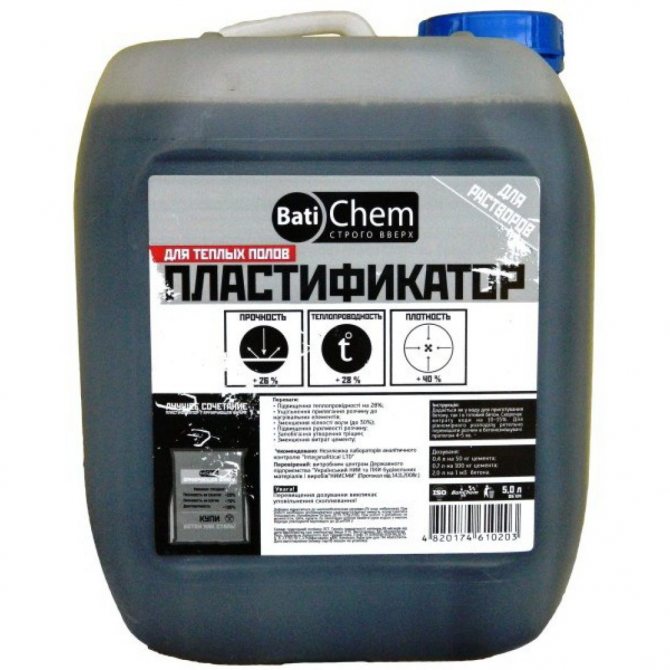

When choosing a plasticizer for a warm floor, consider the consumption of the additive
When choosing a plasticizer for a floor heating system, the type of heating equipment itself is taken into account. If the installation of an eclectic device is envisaged, then a dry additive is used for the screed. When mixing a solution intended for a water-heated floor, it is recommended to use liquid plasticizers.
Dry screed
Dry mixes for a warm water floor relieve builders from many problems and significantly reduce the time for preparing a high-quality solution:
- With them, there is no need to carefully dose the amount of each component, since all proportions are indicated on the package. It is enough to do as indicated in the instructions to get an excellent screed solution.
- Due to the fact that these mixtures are sold in convenient packages and are light enough, their transportation will not be a hassle.
- No special equipment is needed to make the mortar, a container and a construction mixer are enough.
- For each room and type of water floor heating, you can choose your own composition.
- The special additives that they already contain allow you to create a really strong and durable screed.
Not every dry mixture has the ability to withstand heavy loads, so you should carefully read what qualities they have, which is indicated on the packaging.
Consumption of plasticizer for underfloor heating
The quality of the screed for underfloor heating depends not only on the correctly selected plasticizer and on how much of the additive is added to the solution. Therefore, when mixing the components, it is important to accurately calculate the dosage that will improve the performance of the cementitious flooring.
You can find out the necessary proportions in the instructions indicated on the packaging of each type of plasticizer. In this case, the amount of the additive used should not exceed ten percent of the total volume of cement going into the solution.
For 100 kilograms of dry cement, from 1 to 1.5 liters of liquid-type plasticizer is consumed. Dry additives are initially diluted with water in a 1: 2 ratio, and then applied in the same way as concentrated solutions.
Additive actions on concrete
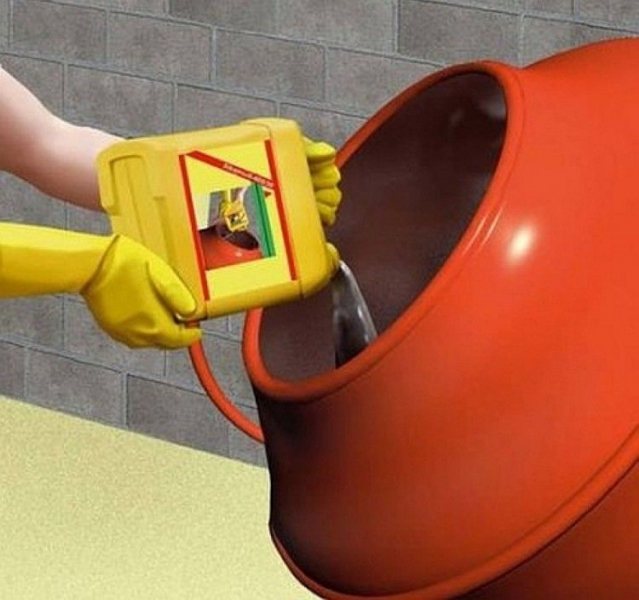

Plasticizers significantly improve the quality of the concrete mix
It must be remembered that the chemical composition of the impurity is not simple, therefore it must be added to solutions, strictly following the instructions, in small quantities.
The effects of the supplement are as follows:
- concrete with the presence of a plasticizer sets faster;
- the solution is highly durable, hydraulic engineering, has a dense structure;
- the admixture allows you to create a low pressure if subsequent mixes of the solution occur;
- concreting in winter excludes accelerated hardening and the release of thermal energy during hydration;
- during long-term transportation, liquid concrete containing a plasticizer is activated by adding a small amount of potassium nitrate to the concrete mixer.
Related article: How to avoid defects when varnishing parquet
Instructions for use
To obtain a solution with good technical parameters, it is necessary to correctly combine all its components, including the plasticizer:
- the additive is added to the building mixture simultaneously with all its constituent components;
- to obtain the required consistency, the solution is mixed in a concrete mixer;
- the process of complete connection of all parts of the cement-sand mixture consists of several stages;
- the components are mixed for twenty minutes, and then the solution is left to stand for half an hour;
- after that, the procedure is repeated.
Depending on the type of plasticizer, the screed hardens within 14 - 20 days. The final maturation of the solution occurs only after a month.
Application procedure
Stage 1
The introduction of the plasticizer into the concrete mix occurs simultaneously with other components: cement, water, aggregate, plasticizer. Then it is necessary to mix all the ingredients in a concrete mixer for one and a half hours, the result is a homogeneous cement suspension.
Stage 2
The resulting mixture can be used for pouring floors for various purposes: industrial floors, warm, public, etc. The most important thing is to evenly distribute the solution over the surface of the base.
The best brands of plasticizers
On the modern market, you can find various types of plasticizers for underfloor heating with distinctive characteristics. The strength and durability of the screed depends on the quality of such an additive. Therefore, it is recommended to purchase such mortar mixes from trusted reputable manufacturers.
Among the plasticizers for floor heating systems, the best are:
- "Rehau". Such a screed additive is produced in liquid form. Its use provides good elasticity of the mortar and increases the heat-conducting properties of the cement-sand coating.
- "Neolas". Plasticizer from a Russian manufacturer, produced in the form of a gel. With the help of it, the porosity of the screed composition is reduced and the process of its hardening is accelerated.
- "C3". The substance belongs to superplasticizers that significantly improve the properties of the mortar, providing the screed with high strength, frost resistance and water resistance. The cement mixture with such an additive becomes mobile and plastic.
- Batichem. The additive helps to increase the final strength of the screed. When using it, the drying time of the solution is accelerated. This plasticizer is produced in the form of a powder and is widely used for laying electric underfloor heating.
- "PL10460". This emulsion improves the adhesion of mortars. The screed turns out to be reliable and durable. The frozen cement-sand mixture cracks during operation.
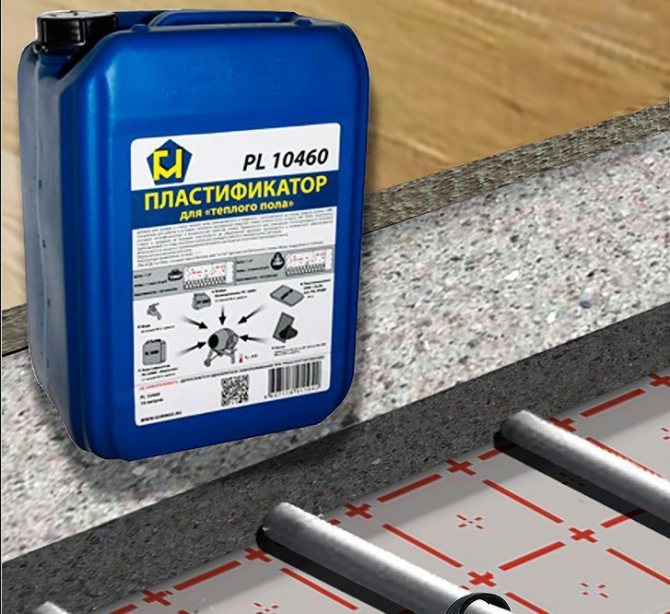

Plasticizer for warm floor PL10460
It is necessary to purchase such plasticizers in specialized stores. Before buying, you should pay attention to the specified method of application of the additive and its purpose. An important factor is also the shelf life of the product.
Preparation of the plasticizer
The purchased plasticizer is added to the original sand-cement mixture in compliance with all manufacturer's recommendations. Particular attention should be paid to the proportions of the plasticizer taken and the prepared screed solution. The operational properties of the finished warm floor depend on this.
The dry mixture of the plasticizer should be no more than 0.7% of the volume of the solution prepared for pouring the screed. The volume of liquid can be about 0.3% of the resulting mass.
Most often, in the Russian construction market, the buyer is offered a liquid, viscous consistency plasticizer C-3. The composition is diluted with water and the screed is mixed with a plasticizer in a deep container. For every 100 kg of cement, add about 0.5 to 0.8 g of the prepared plasticizer composition.
We recommend: What is the characteristic of Rehau underfloor heating?
There are recipes for self-preparation of a modifier for a cement-sand mixture using the following components:
- liquid soap solution, it is necessary to dilute with water at the rate of 250 cm3 per 50 kg of cement mixture;
- 150 g of washing powder dissolved in water is added to 50 kg of screed solution;
- construction grade PVA glue is used to prepare a modifying additive. For 50 kg of sand-cement mixture, 299 g of glue is used.
Material composition
Plasticizers used for floor screed have different components in their composition, and some of the manufacturers even try to hide some of the components to create a unique product.
But at the same time there is a list of the main components that are used almost always:
- Waste purified material from phenol.
- Concentrated sulfuric acid.
- Composite (formalin).
- Purified water.
- Substances that help to remove foam.
- Caustic soda in the form of a liquid.
Due to this composition, it is possible to achieve the required homogeneity of concrete, as well as to avoid the formation of air pockets inside the floor during pouring. The screed for a warm electric floor does not at all allow any cracks, air voids and gaps. Such costs of a concrete screed can lead to the fact that in empty areas the cable will begin to overheat and the system may be damaged due to a short circuit. If you plan to lay a cable electric floor, then use a plasticizer MANDATORY!
Varieties
Let's take a closer look at the types of plasticizers for water floor screed:
- Liquid.
- Dry.
- Antifreeze additive.
- Reinforcing polyamide fiber.
Each of these types of substances helps speed up the hardening process and makes the solution more plastic. Antifreeze additive makes it possible to work with concrete even at negative temperatures. The choice of plasticizer should be based on the floor heating system, as well as the installation method. This is important for a water floor, since the screed must necessarily tightly fit the pipes. These are possibilities only with an elastic solution. The plasticizer will help to ensure that the screed is homogeneous without air gaps - this will help to make it durable. Such a screed can withstand heavy loads, and this is important for floor heating pipes, because if the floor is damaged, there is a danger of damage to the pipes. For this reason, the screed must be at least 2.5 cm.
When creating an electric floor heating system, it is a dry mixture that is used under the tiles, and adhesives are added for better elasticity and strength. The price for the plasticizer will be the same or even slightly less than that of high quality cement. Also, the cost will be affected by consumption and characteristics. Typically, 600 to 1000 ml of plasticizer are used for 1 m 2 of the mixture. If you buy a cheap composition, the consumption will be higher, so you will hardly be able to save.It is better to purchase high-quality materials, as this is a guarantee of reliability, and the period of use will be much longer.
On the construction market there are a huge number of brands of plasticizers for sand-cement and other similar mortars. They can be bought on the market, in special stores, and on the Internet.
How to choose what to look for
When choosing the best plasticizer for the floor, one should build on both the quality and model of the additive, and the conditions in which it will be used, because each type has its own characteristics.
Today, a number of additives are produced that are created for warm floors. Before purchasing the material, you must familiarize yourself with the characteristics that are on the package. In addition, there manufacturers indicate compatibility with warm systems.
The main points to look for when buying a flooring additive:
- the substance must be compatible with the brand of cement in order to get a plastic mixture;
- do not have a smell;
- do not stand out under the influence of liquids and oils.
How to choose a plasticizer for installing a water floor, here you need to take into account the presence of air bubbles inside the resulting composition, therefore a dry product is better suited.
And when arranging the electrical system - semi-dry pouring, the mixture consists of sand, cement powder, plasticizer, fiberglass and a little water, this will prevent the formation of cracks on the surface. That is, it is recommended in liquid form, with increased plasticity.
Advantages and disadvantages of plasticizers
- The composition of plasticizers includes components that slow down corrosion, which has a beneficial effect on the reinforcing elements of the floor.
- The screed becomes strong, dense and acquires the effect of repelling water, as well as neutralizes the possibility of the appearance of salt.
- The setting time of concrete is significantly reduced.
- Increases the coefficient of thermal conductivity of the concrete base by displacing air and water molecules (10-20% of the volume) from the concrete solution.

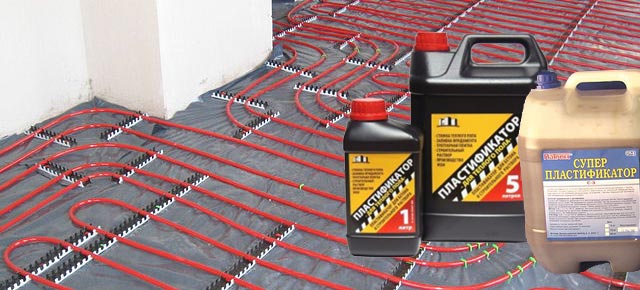
- Complies with all environmental standards. Without smell.
- The concrete becomes flexible and flexible, the pouring process is simplified, and the surface becomes almost smooth.
- Durability.
- It is possible to use a plasticizer as an antifreeze additive up to - 25 degrees.
There are few disadvantages, but they are:
- Strange as it sounds, a chemically complex composition.
- Compliance with instructions is required.
Properties and types
A cement mortar plasticizer for the construction of underfloor heating has properties that have a positive effect on their quality.
The main properties of the additives used in the manufacture of cement mortar for underfloor heating:
- repel liquid;
- withstand sub-zero temperatures up to - 25 ° C;
- have a neutralizing effect on potassium nitrate in the amount of 5% of the total weight;
- protect the concrete base from the negative effects of chemicals;
- have inhibitory qualities;
- give strength by reducing the surface tension of water;
- reduce the tendency to cracking.
It is important to correctly determine which type of floor plasticizer is suitable, because this affects both the operating life of the heating system and your electricity costs.
When using a concrete mixture without a plasticizer, it is possible that the surface warms up unevenly and the thermal conductivity decreases, since there are air voids in the screed. It is better to add a plasticizer in the form of an emulsion, then the mixture will be more homogeneous.
By the type of additives there are:
- liquid - it is easy to work with them, and there is no need for preparation;
- dry - stored for a long time, but need to be kneaded;
- reinforcing - equipped with additional chemical elements that give strength to the screed;
- anti-frost - used for outdoor work.

